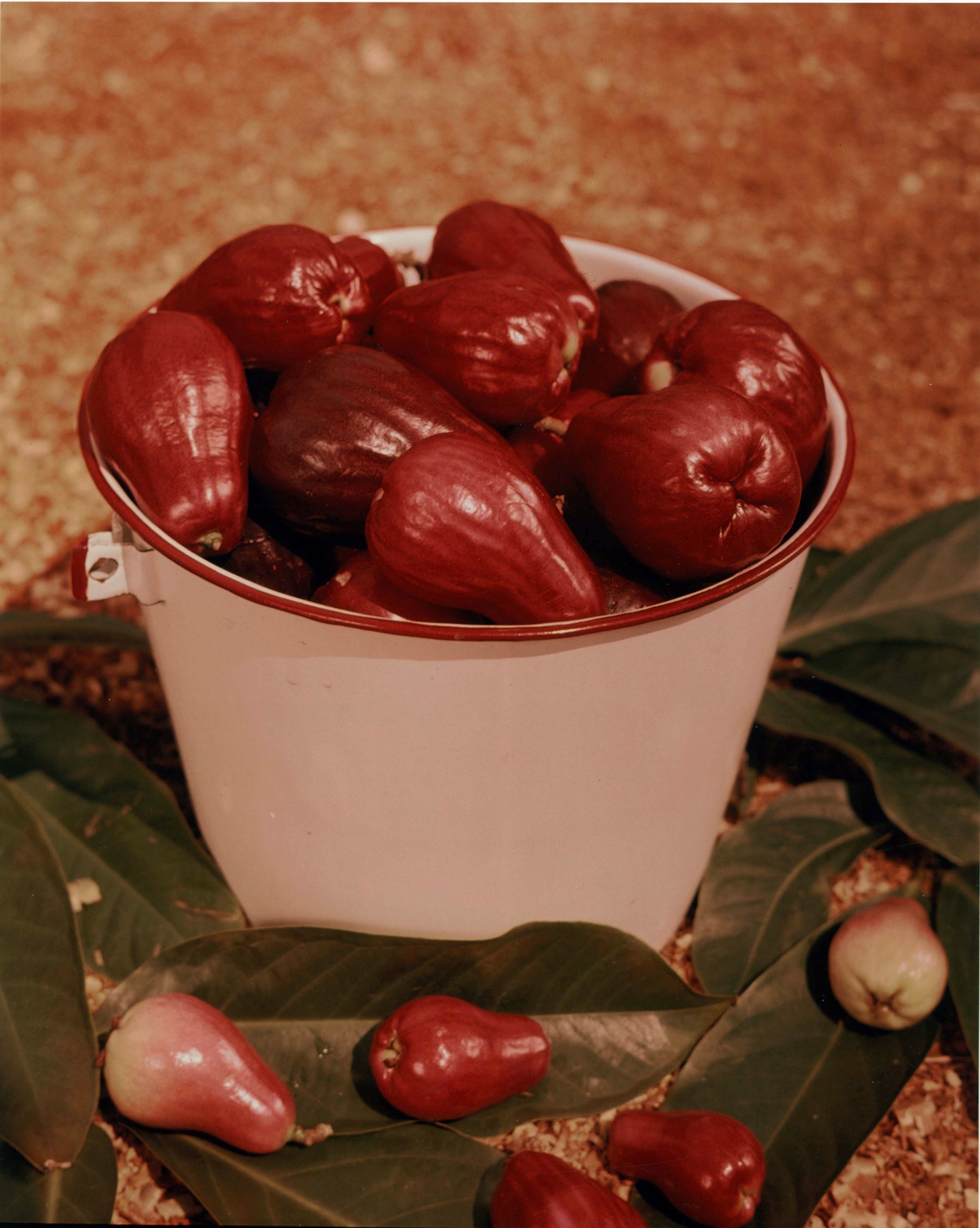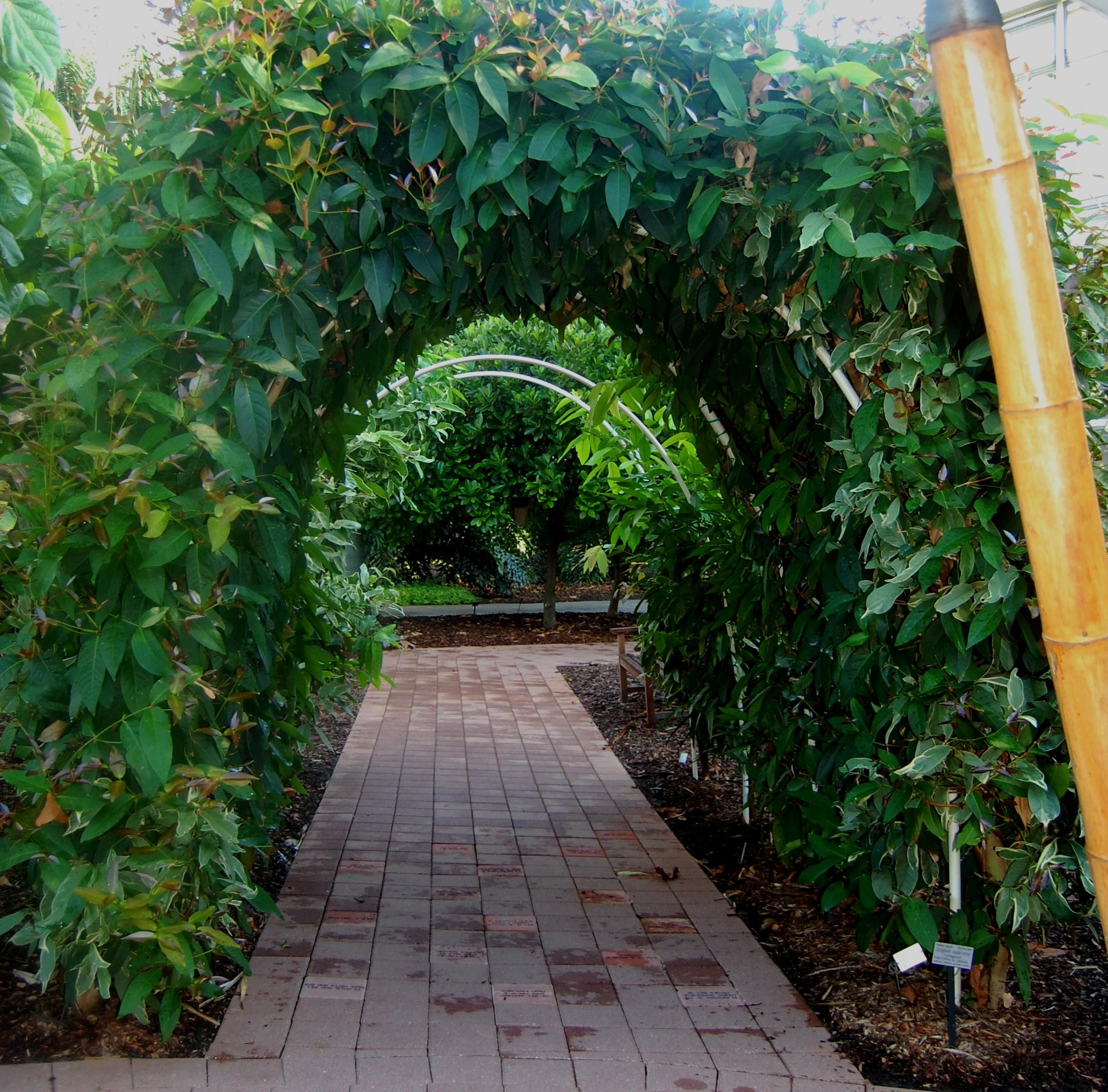Rose Apple: An Arc of Bells
BY NORIS LEDESMA
FAIRCHILD TROPICAL BOTANIC GARDEN
As published in the Miami Herald
In Florida
we have a unique opportunity to create an edible landscape we can enjoy year
round. Fruit trees are an essential part of any edible garden. However, a tree
may not always be possible or functional in all yards. The Rose Apple provides
a unique ability to have a fruit tree with out having a traditional tree that
would take up a lot of space, offering a bounty of fruit in the fall and spring
as well as handsome foliage throughout the year.

In its native habitat on Malaysia, Rose
Apple (Syzygium aqueum) has been
cultivated and eaten for centuries. However, the popularity of these fruits is
not limited to Malaysia.
The fruit has spread across the tropical regions of Asia
to many different cultures from Vietnam to Pakistan.
My own first experience with the Rose Apple was in Thailand where this fruit is
considered sacred and is prized for its, brightly colored fruits, beautiful
foliage, and white powder-puff flowers.
The fruits of the Rose Apple range from
a pale green to a deep crimson and when ripe form into a bell shape, which
bends to the touch. Every morning women across prepare offerings of these
sacred fruits, which are artfully carved and displayed in small delicate
containers. Often these containers are made from the leaves of the Rose Apple
tree, which are slim and narrow.
Although, one would not think so a first glance the Rose Apple is
actually a type of edible berry. Its flavor is similar to that of a watermelon
when ripe. Along the Indian
Ocean, however, people have taken to eating the fruit unripend.
Cutting the fruit and mixing it in salads, or simply adding salt serving with
dip as a snack or appetizer. In addition to being eaten out of hand Rose Apples
can also be cooked into chutney, preserves or lightly sautéed into a sauce.
Rose apple tree are easy
propagated by air layer, cuttings or grafting. I would not recommend planting
from seed because these trees will often produce inferior fruit and have poor
disease resistance. Even though Rose
Apples are well adapted to the climate in South Florida, they do require some humidity and
fertilization. This regiment will ensure
healthy growth and fruiting, most trees will fruit twice a year, if properly
tended. Mulching is a great way to reduce watering and providing nutrients to
the tree.
Rose Apples are available at
local nurseries throughout South Florida. An
option for those with limited space is to grow the Rose Apple as a trained tree
or trellis. When small can easy be
trained forming arcs and hedges in the garden. When trellising, the gardener
will need to provide a sturdy structure from which the plant can support
itself, this is especially true since the tree will also be providing fruit.
When the tree is just beginning to grow wrap new growth around the structure
this will ensure form and strength. As the tree matures, pruning will be
required to ensure the trees maintain their size and shape. Make sure you trim
new buds and growth, ensuring the core spiral remains intact.
If you choose to design a Rose Apple arch, you should first create arch frame.
An easy way to do this is by driving a 1.5-foot long iron bar into the ground,
make sure ½ foot is exposed above the grown space the two bars 2 to 3 meter
part. Then use a PVC pipe measuring 1
inch diameter x 10-12 ft long to bridge the arc. Then twist the branches of the tree around
the pipe to start shaping the tree securing them with twine.

If you decide to
make a tunnel you can repeat this arc many times spacing 4 feet apart.
A healthy tree can produce
abundant fruits and has two fruiting seasons annually, May-September and
November to March.
Some things you need to think
about when you’re planning an edible landscape by including fruit trees:
- Consider
the space you have available, for most landscaping areas dwarf or semi
dwarf trees will work better with the other trees and shrubs you’ll be
incorporating. - Don’t
forget to include your favorite varieties. - Many
fruit trees don’t start producing fruit for a couple years, so you may
have to have a little patience. - Don’t
be afraid to experiment with fruit trees in your landscaping. You can tuck
an rose apple tree in here for plenty of fruit to satisfy your families
summer craving.
Noris
Ledesma is Curator of Tropical Fruit at Fairchild Tropical Botanic Garden.






